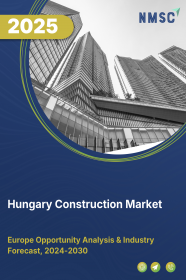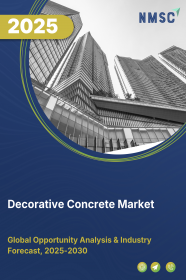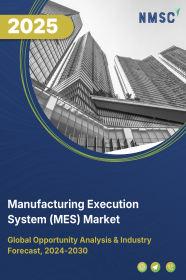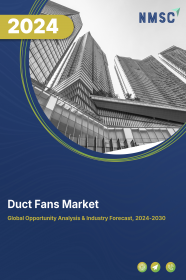
Hungary Construction Market by Type (Renovation, and New Construction), by Sector (Real Estate, Infrastructure, and Industrial), by Construction Method (Traditional Construction, Prefabricated/Modular Construction, 3D Printed Construction, and Green/Sustainable Construction), and by Type of Contractor (Small Contractor, Medium Contractor, and Large Contractor) – Industry Trends and Forecast, 2025–2030
Industry: Construction & Manufacturing | Publish Date: 20-Sep-2025 | No of Pages: 81 | No. of Tables: 99 | No. of Figures: 56 | Format: PDF | Report Code : CM2210
Hungary Construction Industry Overview
The Hungary Construction Market size was valued at USD 12.97 billion in 2024, and is projected to grow to USD 14.76 billion by 2025. Additionally, the industry is expected to continue its growth trajectory, reaching USD 19.73 billion by 2030, with a CAGR of 6% from 2025 to 2030.
Hungary construction market is expanding steadily, bolstered by robust government spending and EU funding focused on power, energy, and transportation infrastructure. Major initiatives such as the Paks II Nuclear Power Plant and projects under the REPowerEU Plan highlight the country’s commitment to green energy and sustainable mobility, with investments in solar power, smart grids, and zero-emission public transport.
However, the market faces challenges from complex regulatory procedures, which can delay project timelines and increase costs. Despite these barriers, the growing adoption of digital technologies, including Building Information Modeling (BIM), AI, and IoT, presents significant opportunities to improve project efficiency, collaboration, and overall infrastructure development.
Government Spending Drives Hungary Construction Market Trends
Hungary’s construction market is experiencing strong growth, largely supported by increased public investment and funding from European institutions. Government-led infrastructure initiatives are driving momentum across key segments, with renewed focus on energy systems, utilities, and transport networks. These investments are stimulating activity in both urban and regional areas, reinforcing the sector’s role in national development.
Strategic funding allocations are also aimed at accelerating the green and digital transition of the construction landscape. Public resources are being directed toward energy-efficient infrastructure and modern utility systems. These developments are positioning the construction sector as a key instrument in delivering long-term economic and environmental objectives.
Sustainable Transportation Initiatives Propel Hungary Construction Market Growth
The construction market in Hungary is increasingly driven by the government’s focus on sustainable transport. Infrastructure development strategies prioritize projects that improve mobility, reduce environmental impact, and support long-term regional connectivity. Public policies are aligning construction objectives with broader climate and emission reduction targets.
National and cross-border transportation improvements are being implemented with support from both domestic and EU-backed programs. Investments in low-emission transport infrastructure and modernized mobility systems are enhancing demand for advanced construction solutions. This trend is reshaping market dynamics and contributing to the sector’s resilience.
Regulatory Complexities Pose a Barrier to Hungary Construction Market Expansion
The construction sector in Hungary faces structural challenges arising from regulatory complexities. Infrastructure and real estate projects must navigate multiple layers of permitting, compliance requirements, and legal frameworks. These regulatory obligations can result in extended timelines and increased administrative burdens.
Variability in interpretation and application of rules across jurisdictions creates uncertainty for developers and investors. Shifts in policy or procedural changes can disrupt project planning and impact financial feasibility. Addressing these inefficiencies remains critical to unlocking the full potential of the construction market.
Integration of Digitalization and BIM Presents Lucrative Opportunity for Market Expansion
Digital transformation is creating new growth opportunities in Hungary’s construction sector. The adoption of digital tools, particularly Building Information Modeling (BIM), is improving design accuracy, resource efficiency, and project coordination. These innovations are becoming central to modern construction workflows and compliance processes.
As digital infrastructure and smart technologies gain traction, stakeholders are increasingly prioritizing data-driven construction solutions. The integration of cloud platforms, AI, and automation is enhancing productivity, reducing delays, and enabling more effective asset management. These advancements are accelerating the sector’s transition to a more innovative and efficient operating model.
Competitive Landscape
The key players operating in the Hungary construction industry include Strabag SE, Magyar Epito, Swietelsky AG, Colas Hungary Zrt., Duna Asphalt Ltd., EUROASZFALT, KEZS Group, Betonutepito, Hidepito, Utiber, DVM Group, Hunep, and others.
Hungary Construction Market Key Segments
By Type
-
Renovation
-
New Construction
By Sector
-
Real Estate
-
Residential
-
Affordable
-
Luxury
-
-
Commercial
-
Retail Buildings
-
Office Buildings
-
Hospitality
-
Healthcare Facilities
-
Educational Institutes
-
Entertainment Ventures
-
-
-
Infrastructure
-
Transportation
-
Airport
-
Port
-
Rail
-
Road
-
-
Water and Wastewater
-
Energy
-
Telecommunication
-
-
Industrial
-
Manufacturing Plant
-
Warehouses
-
Power Plants
-
Oil Refineries
-
Chemical Plants
-
By Construction Method
-
Traditional Construction
-
Prefabricated/Modular Construction
-
3D-Printed Construction
-
Green/Sustainable Construction
By Type of Contractor
-
Large Contractor
-
Medium Contractor
-
Small Contractor
Key Players
-
Strabag SE
-
Magyar Epito
-
Swietelsky AG
-
Colas Hungary Zrt.
-
Duna Asphalt Ltd.
-
EUROASZFALT
-
KEZS Group
-
Betonutepito
-
Hidepito
-
Utiber
-
DVM Group
-
Hunep
Report Scope and Segmentation
|
Parameters |
Details |
|
Market Size in 2024 |
USD 12.97 Billion |
|
Revenue Forecast in 2030 |
USD 19.73 Billion |
|
Growth Rate |
CAGR of 6% from 2025 to 2030 |
|
Analysis Period |
2024–2030 |
|
Base Year Considered |
2024 |
|
Forecast Period |
2025–2030 |
|
Market Size Estimation |
Billion (USD) |
|
Growth Factors |
|
|
Companies Profiled |
12 |
|
Market Share |
Available for 10 companies |
|
Customization Scope |
Free customization (equivalent up to 80 working hours of analysts) after purchase. Addition or alteration to country, regional, and segment scope. |
|
Pricing and Purchase Options |
Avail customized purchase options to meet your exact research needs. |

















 Speak to Our Analyst
Speak to Our Analyst





















